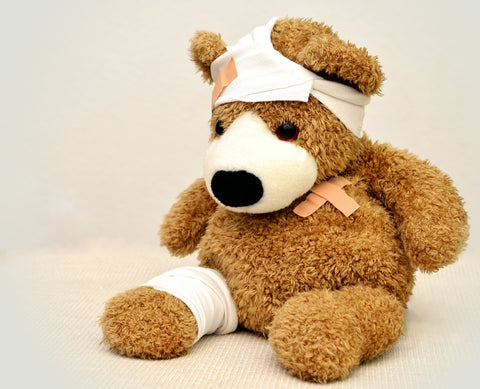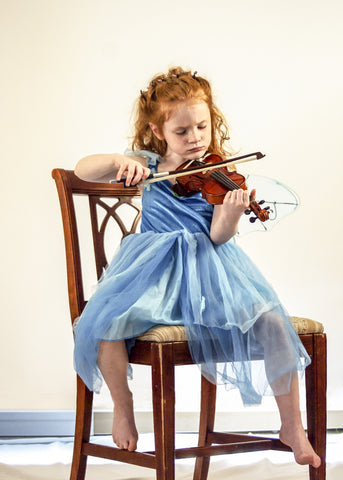
Joint Laxity goes by many names. You may hear it referred to as Hypermobility, Ligament Laxity, or as being double jointed. When it affects the entire body it’s referred to as Generalized Joint Laxity and occurs in roughly 10% of the population. While Joint Laxity itself isn’t an injury, it is a condition that could potentially lead to injury and chronic pain amongst instrumentalists.
Joint Laxity is most common in children and teenage girls so a little extra attention and information on the part of the music teacher can help set a student up for success and pain-free playing.
If we remember back to our basic biology, a ligament is a tough fibrous cord that connects a bone to a bone, that’s our joints. Joint or Ligament Laxity is what happens when the tough fibers of our ligaments are a little less tough and allow the joint to cave in a bit more than normal. This gives the illusion that our joint bends both directions or that someone has two joints which is where the term “double-jointed” arose from.
While ligaments are responsible for the connecting, they’re less responsible for the stabilizing; that responsibility lies in our muscles. While we can’t control how flexible our ligament tissue is, we can control and improve our muscle strength and stability around the joint.
We’re headed back to basic biology again, specifically to our muscle buddies, the flexors and extensors. These muscle pairings play an important role in stability for the most common area Joint Laxity reveals itself in the musician - the fingers.
Our fingers are controlled by two different muscle groups: the muscles of the hand and the muscles of the forearm. There aren’t actually any muscles running up into our fingertips! (I know, it's crazy!) So how can we stabilize these tiny joints if our ligaments are loose?

Every time we squeeze and make a fist or press down in our fingers we’re using our flexor muscles. When we spread and expand our fingers, we’re engaging our extensor muscles.

Most musicians maintain a fairly neutral to flexed hand position to accurately play their instruments. The hand sits in fairly natural state until a finger is asked to press down on a string, key or valve. When this happens the flexor muscles engage and push down to create the sound.

For players with Joint Laxity however, the finger doesn’t stay in the rounded or flexed position, instead the joint appears to collapse or double, caving in on the work of the flexor muscle which is no longer being made to stabilize the joint. Upon release in playing, the joint returns to it’s more neutral state of being.
This lack of stability can slow down play, lead to muscle imbalances or weakness and increase the likelihood of inflammation and pain in the tendons of the forearm and hand. That increase the potential for Repetitive Strain Injuries or pain from pressure on nearby nerves.
To encourage strength training, we’ve got a tool for sale in our online shop suggested by this week's podcast guest, Dr. Jeff Russell. Dr. Russell currently works with Ohio University Marching Band members on rehab and injury prevention and gave a presentation on Generalized Joint Laxity and Hypermobility at the 2019 Performing Arts Medicine Association Symposium.
Some of Dr. Russell's work on Hypermobility serves to streamline the terminology used amongst researchers. There has been debate over the years as to whether Joint Laxity is helpful or hurtful to musicians. Whatever future research suggests, it is most important to remember that with roughly 75% of musicians regularly reporting physical pain, these rehab tools are important to stability, strength and career-longevity for all musicians.
You can find our podcast episode with Dr. Russell streaming on SoundCloud and iTunes now as well as our interview show notes on the blog.
Less pain and more music!
Karen







